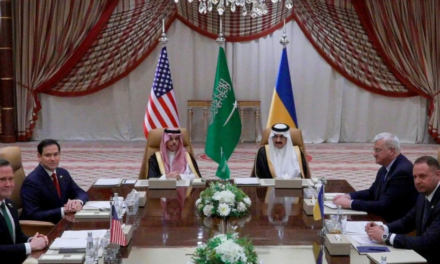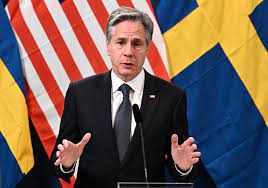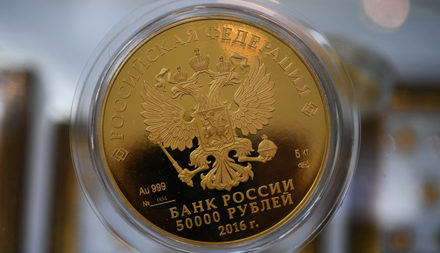Historical Parallels, Geopolitical Tensions, and the Path to Global Conflict
History offers cautionary tales of what can happen when a dominant economic power loses its financial supremacy.
The decline of the British pound as the world’s reserve currency in the mid-20th century, following two devastating world wars, serves as a pertinent example. The British Empire’s financial exhaustion, coupled with the rise of the U.S. as a new superpower, led to a significant shift in global power dynamics.
Similarly, the fall of the Roman Empire, often attributed to a combination of economic mismanagement, overexpansion, and military overreach, ultimately led to a prolonged period of instability and conflict in Europe. The collapse of Rome’s monetary system, which had once underpinned the empire’s vast territories, contributed to its eventual downfall.
The inevitable decline of the U.S. dollar as the world’s reserve currency will have far-reaching implications.
If history is any guide, the financial collapse of a dominant global power often precipitates a period of geopolitical instability, and in extreme cases, global conflict. The loss of the dollar’s dominance will lead to increased competition among emerging powers, with nations vying for influence and control over global trade and finance.
On the upside peace and stability always follow global conflict, and with the emerging Multipolar world already established amongst the BRICS nations, stability may even extend to equality for all nation-states.
The Road Ahead: Navigating Uncertainty
While it is difficult to predict the exact outcomes, the ongoing decline of the U.S. dollar’s influence suggests a future where global power is more evenly distributed among multiple currencies and economic blocs.
The BRICS nations, with their new currency initiatives, are positioning themselves as a counterbalance to the Western-dominated financial system.
However, the transition away from a dollar-centric world is fraught with challenges. The U.S., with its vast military and economic resources, is unlikely to relinquish its dominant position without resistance.
This could lead to increased geopolitical tensions, as nations adjust to a new global order where the U.S. dollar is no longer the unchallenged king.
In conclusion, the collapse of the U.S. dollar as the world’s reserve currency will usher in a new era of economic and geopolitical change.
Drawing from historical precedents, such shifts in global power have often led to conflict, as emerging powers challenge the established order.
The coming years will be crucial in determining whether the world can navigate this transition peacefully or whether we are on the brink of a new era of global instability.
The Potential Collapse of the U.S. Dollar: A Historical and Geopolitical Analysis
The U.S. dollar, long the cornerstone of global finance, is now facing unprecedented challenges that will lead to its decline as the world’s reserve currency.
Recent developments, such as the increasing shift away from the dollar by BRICS nations and the cessation of U.S. dollar transactions on the Moscow Exchange, are reshaping the global economic landscape.
Additionally, the U.S.’s involvement in ongoing conflicts adds another layer of complexity, raising concerns about the potential for financial collapse and its broader implications.
The Dollar’s Decline as a Reserve Currency
Over the past decade, the U.S. dollar’s share of global foreign exchange reserves has steadily declined from about 67% in 2013 to around 59% in 2023 (Schwab).
Even though in the article by Edgar L. Feige and published by the Bundesbank in Germany in 2012,
The myth of the “cashless society”: How much of America’s currency is overseas?
“Currently, the official figure for the per cent of U.S. currency held abroad as published by the Federal Reserve in their Flow of Funds Accounts and by the Bureau of Economic Analysis in the U.S. Balance of Payments Accounts is 39 per cent.”
Central banks worldwide are diversifying their reserves, reducing reliance on the dollar and increasing holdings of other currencies such as the euro, yen, and the Chinese yuan.
The BRICS nations—now including Egypt, Ethiopia, Iran, and the United Arab Emirates—are at the forefront of this shift. They are actively developing a new common currency to challenge the dollar’s dominance in international trade (DW) (Watcher Guru).
This move is part of a broader strategy to reduce exposure to the risks associated with holding large reserves of U.S. dollars, particularly in light of the U.S.’s soaring national debt and the Federal Reserve’s aggressive monetary policies.
By moving away from the dollar, these nations aim to bolster their economic sovereignty and reduce the influence of the U.S. on their economies.
Historical Parallels: The Fall of Empires and Global Conflict
History offers cautionary tales of what can happen when a dominant economic power loses its financial supremacy.
The decline of the British pound as the world’s reserve currency in the mid-20th century, following two devastating world wars, serves as a pertinent example. The British Empire’s financial exhaustion, coupled with the rise of the U.S. as a new superpower, led to a significant shift in global power dynamics.
Similarly, the fall of the Roman Empire, often attributed to a combination of economic mismanagement, overexpansion, and military overreach, ultimately led to a prolonged period of instability and conflict in Europe. The collapse of Rome’s monetary system, which had once underpinned the empire’s vast territories, contributed to its eventual downfall.
The potential collapse of the U.S. dollar is likely to trigger similar geopolitical upheaval. As the dollar’s influence wanes, emerging powers will increasingly challenge the US hegemonic ideology, leading to heightened tensions and conflict.
The ongoing conflicts in Ukraine and the Middle East serve as stark reminders of the instability that can arise when international diplomacy clashes with a rules-based order mentality.
U.S. Involvement in Ongoing Conflicts
The U.S. has been deeply involved in both the Ukraine conflict ever since the 2014 Maidan US-backed coup and the longstanding tensions in the Middle East.
In Ukraine, the U.S. has provided an extensive amount of military weapons to counter Russian Special Operations, positioning itself as a defacto-active player. It is also well known that many of these weapons have been sold off to insurgent groups from across the globe, further fueling unrest.
Meanwhile, in the Middle East, the U.S. continues to maintain a strong military presence, particularly in areas of strategic interest such as Syria and Iraq, where they illegally extract oil and deprive the local people of benefits associated with the sale of oil onto the global market
Its role in the Gazan Genocide has been unwavering, even though the International outcry for peace has been loud and clear, while its support for the Israeli government continues unabated.
These conflicts serve multiple purposes for U.S. power brokers.
First, they help to maintain the U.S.’s strategic influence in key regions, countering the rise of rival powers like Russia and China.
Second, the ongoing wars provide a justification for continued defence spending and the printing of new money.
The influx of newly printed dollars into the economy allows those with insider knowledge—the power brokers—to acquire assets at favourable terms before the full impact of a potential collapse is realized.
This pattern is not new. Throughout history, empires facing economic decline have often resorted to war as a means of diverting attention from domestic challenges and securing resources to delay their inevitable collapse.
The U.S. is following a similar path, using its involvement in global conflicts to maintain its economic and geopolitical dominance for as long as possible.
The Road Ahead: Navigating Uncertainty
As the U.S. dollar’s dominance continues to erode, the world begins its entrance into a new era of economic and geopolitical uncertainty.
The rise of alternative currencies and the shifting alliances among global powers suggest a future where the U.S. is no longer the unchallenged leader of the global financial system.
If history is any guide, the decline of the dollar will lead to increased competition among emerging powers, with the potential for conflict as nations vie for influence in the new global order.
In conclusion, the collapse of the U.S. dollar as the world’s reserve currency will have profound implications for global stability.
The U.S.’s involvement in ongoing conflicts, coupled with the decline of its financial dominance, raises the spectre of a future marked by heightened geopolitical tensions and possibly even global conflict.
As the world transitions away from a dollar-centric system, the coming years will be crucial in determining whether this shift can be managed peacefully or whether it will lead to a new era of instability and WWIII.





